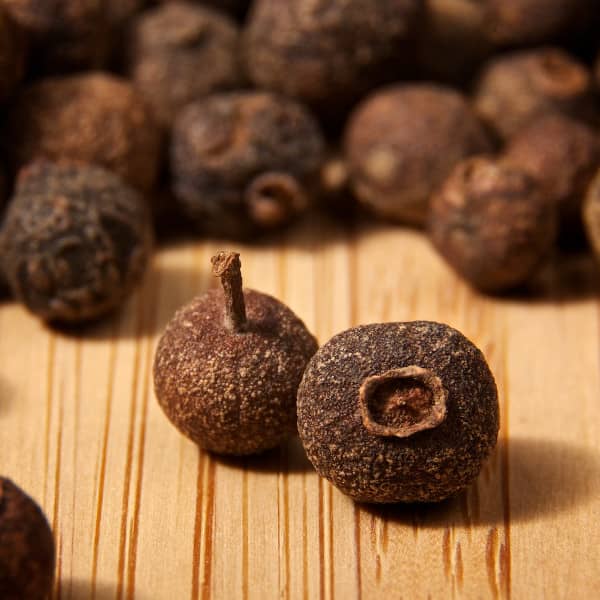
Do you have an allspice plant?
If so, then you’re probably wondering how to care for it. Luckily, we’ve got the perfect guide just for you! We know that caring for plants can be tricky sometimes and we want to make sure your tree is always healthy and happy. So read on below to find out more about how to take care of your allspice tree.
You’ll learn everything from what kind of soil they like best, when they should be watered, and even some tips on pruning them back in the springtime. And if there are any other questions you might have along the way don’t hesitate to reach out by email or phone call! We love our readers here at How do I Care For My Allspice Plant? and would love nothing more than to help you with whatever concerns or questions you may have about growing these beautiful trees in your garden space. It doesn’t matter if this is your first time growing a plant or not; we’re here every step of the way!
Allspice (Pimenta dioica)
When is the best time of the year to plant Allspice
The best time to plant allspice is during the late winter or early spring. During this time, you risk very little damage to the plants once they are established. The ideal planting times vary depending on where your home is located, but any time between late February and mid-May should be fine.
Where in the Garden Should You Plant Allspice
Allspice grows well in tropical areas, so you should plant it in an area that gets light for about 40 percent of the daytime. The saplings require more light to stay healthy, but the trees only need a little bit of light to thrive. Make sure to plant allspice in loose and well-moistened soil.
How Often Should I Watering Allspice
Allspice, also called Pimenta dioica, is a slow-growing evergreen shrub that produces berries used to flavor meats and beverages. If cultivated in the home garden it requires frequent watering to ensure plentiful fruit production.
It also requires moist but well-drained, acidic soil for healthy growth. The plant performs best in partial shade but can tolerate full sun in cooler climates. Consistent watering every day or every other day is necessary during periods of fruit production to ensure plump berries are ready for harvest.
When and How to Harvest Allspice
Allspice is a dried, unripened berry that is the fruit of the Pimenta dioica plant. The berries are picked when they are green and unripe, and then they are dried. Allspice is most commonly used in Caribbean cuisine, as well as in Middle Eastern and Indian cuisine. It is also used in baking and in meat dishes.
Allspice can be harvested at any time during the growing process. The berries will turn from green to red to brown as they ripen. The berries will be at their peak flavor when they are red.
Different Ways to Store Allspice
Allspice is a dried, unripened berry that is the fruit of the Pimenta dioica plant. It is native to the Greater Antilles but is also grown in Jamaica, Mexico, and other parts of Central America. Allspice is used as a spice to add flavor to dishes. It can be stored in a cool, dry place for up to six months.
Whole berries should be stored in an airtight container. Parchment paper can also be used to wrap the berries before placing them in a jar with a tight-fitting lid.
Ground allspice will store well if it is kept in an airtight container or tin for up to six months. If you use ground allspice often, you can also try freezing it. When thawed, the spice will have a finer texture and taste fresher than pre-ground allspice.
If you have large quantities of allspice to store for an extended period of time, experts suggest using a vacuum sealer to pack it. This will help retain flavor and prevent the allspice from losing moisture.
Other things of interest about Allspice
- Allspice is the dried, unripe fruit of the Pimenta dioica plant.
- The name “allspice” was given by Europeans who first tasted this unique spice mixture and thought it contained several different spices.
- Some people mistakenly think that allspice should be used like pepper, but allspice has quite a different flavor profile than black pepper.
- One of its main uses is as an ingredient in jerk sauce because its spicy flavors blend well with peppers.
- It’s also good for making pate’ or cooking sauces to give dishes extra flavor.
- You can make your own allspice by mixing peppercorns, cloves, cinnamon sticks and dried orange peel together in a jar and letting it sit for several months.
- Allspice is also used to help relieve gas problems, because the combination of flavors in the spice helps calm stomach upset.
- It’s also used in some cosmetic products, candles and insect repellent.
- The allspice tree normally grows to about 20 feet tall with a spread of about 15 feet.
Conclusion: Now you have a better idea of how to grow Allspice and how to care for it properly. If you follow this advice, our guess is that your allspice tree will be super healthy and happy!